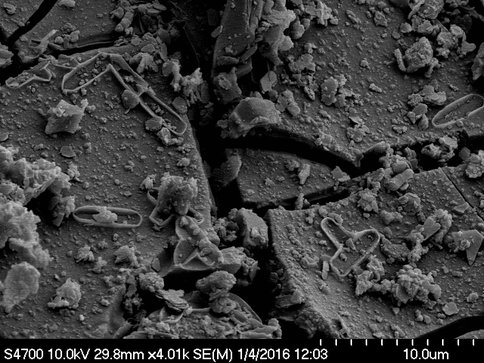2015 Annual Science Report
 SETI Institute
Reporting | JAN 2015 – DEC 2015
SETI Institute
Reporting | JAN 2015 – DEC 2015
Environmental and Biological Signatures in Yellowstone National Park Silica Precipitating Hot Springs
Project Summary
Radiation from the Sun potentially affects solids, liquids, and gases found on the surfaces of planets. Radiation exposure could change the chemical and mineralogical make-up of the surface materials. Sample-return missions aim to collect samples, cache them for a period of time, and then return them to Earth for additional analysis. We have performed field experiments to document environmental radiation levels and exposures and their impact on recently formed materials and associated organic matter.
Project Progress
Investigators Hinman and Cady have collected samples from acidic iron-silicon precipitating and acidic silica precipitating hot springs in Yellowstone National Park. These samples represent silica-rich Martian environments. The composition and micro-textures of the solids document changes in environmental conditions over the course of deposition. Fig 1 shows evidence of rapid cementation of bacillus(?) onto the surface of silica deposited in an acidic silica precipitating hot spring. Such deposits appear to rapidly entomb microorganisms, a hypothesis that will be tested in the future.
-
PROJECT INVESTIGATORS:
-
PROJECT MEMBERS:
Sherry Cady
Co-Investigator
Jesse Dillon
Collaborator
Lindsay Mackenzie
Collaborator
-
RELATED OBJECTIVES:
Objective 1.1
Formation and evolution of habitable planets.
Objective 2.1
Mars exploration.
Objective 6.1
Effects of environmental changes on microbial ecosystems
Objective 7.1
Biosignatures to be sought in Solar System materials
Objective 7.2
Biosignatures to be sought in nearby planetary systems

